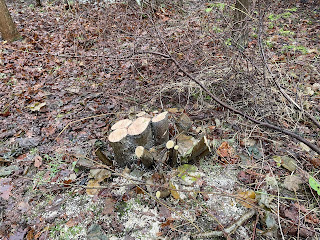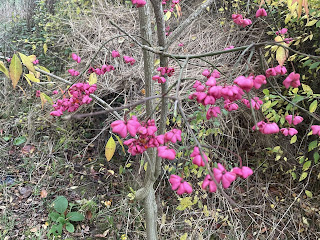Starting coppicing of Compartment 5 today - a bit late in the year to be starting, but delayed by Covid and having to get the ducks and hens into bird flu secure accommodation.
Hazel is being cut at a 45 degree angle with the cuts facing out from the middle of the stool to take water away and prevent rot. About half of the birch are being cut down, as they have done their job as a 'pioneer species' protecting the slower growing trees from the wind. The tops of the blackthorn and hawthorn is being cut off and they are then being cut partway through at the base and pushed over. This will create new shoots at ground level rather than growing high. All of this is to create different layers in the canopy which gives a variety of different habitats.
Coppicing also lets light to the woodland floor to allow a succession of woodland plants to grow. Unfortunately as this is new woodland there is not a seedbank in the woodland floor for flowers to grow in response to the extra light in the spring, so i will planting some flowers to get this process started. Some are already moving in on their own - but it will take a very long time! This is why planting new woodlands is never a good substitute for preserving old woodlands.



































